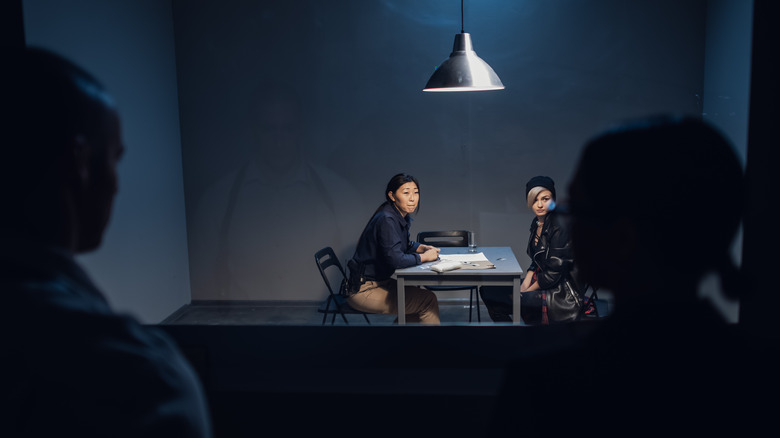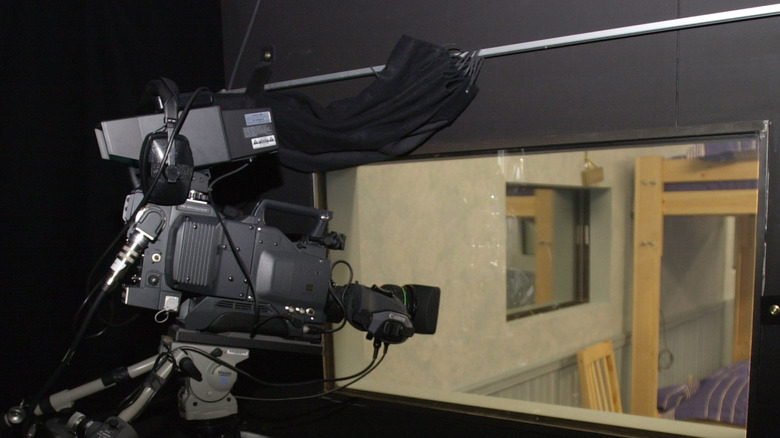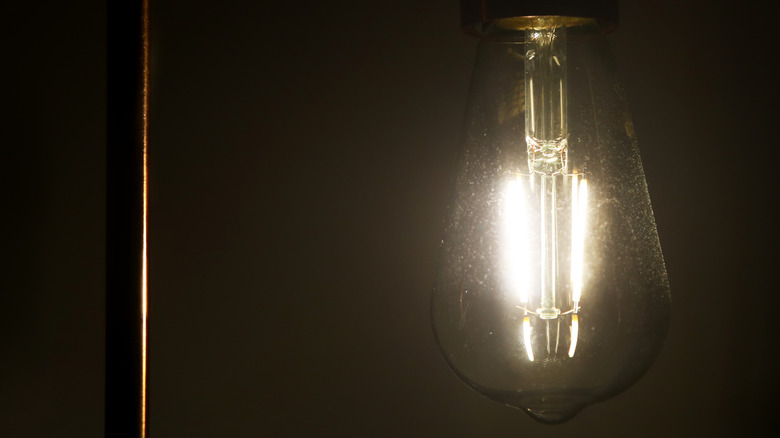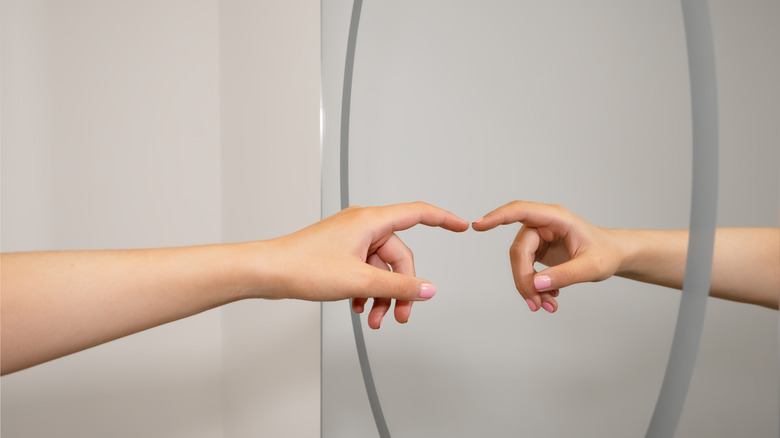The Science Behind Two-Way Mirrors
Think of a two-way mirror, also known as a one-way glass, and you probably think of a police interrogation room. Without a doubt, two-way mirrors often pop up in Hollywood movies and detective TV shows. It makes sense: It's easy to see how this object could be valuable for interrogation purposes or catching a criminal. A standard mirror reflects light to reflect the viewer's image back on themselves. In contrast (as seen in cop shows), the two-way mirror serves as a standard mirror on only one side. While the criminal only sees a reflection of themselves, the cop can see through to watch the criminal's behavior.
According to "Social Physics Comes to the Workplace" (via Gale Academic OneFile), Emil Bloch first patented the two-way mirror in 1902. Bloch was a Russian immigrant living in Cincinnati, Ohio, and he referred to his invention as a "transparent mirror." His creation quickly caught on for its multiple convenient applications. Although two-way mirrors aren't practical for our day-to-day lives, they are incredibly diverse — they can be used in arcade video games, photo booths, and art installations.
Likewise, they make incredible theatrical stage illusions, including Pepper's Ghost, which is famously utilized in Disney's Haunted Mansion ride. These details suggest that two-way mirrors work very differently than one-way mirrors, but this is far from the truth. Two-way mirrors are formed in much the same way, and their efficacy depends on a host of environmental factors — primarily how much light is present on either side of the mirror.
How does a two-way mirror work?
In a word, two-way mirrors are strategic. Their appeal lies in the fact that they look like a regular mirror from one side, allowing an individual to surveil another. This, however, is not a magic trick. In fact, two-way mirrors undergo a similar creation process as regular mirrors, with only slight modifications to the production. To create a run-of-the-mill mirror, a metallic, reflective coating is placed behind a piece of glass. Nowadays, aluminum is commonly used in this process. When light hits the metallic coating, it bounces back into the eyes of the viewer, allowing them to see their own image.
In contrast, a two-way mirror uses a much thinner reflective layer. Per HowStuffWorks, this a referred to as a "half-silvered surface." This means that the glass has fewer reflective molecules than an average mirror. Simply put, only half the glass is covered in reflective molecules. The products used in this process are usually semi-transparent aluminum on a piece of acrylic.
This thinner layer only reflects some of the light — usually around 50% of it — while the rest of the light is absorbed into the mirror. Both sides of the mirror are actually created in the same way, meaning that, from either side, about 50% of any light is absorbed while 50% is reflected. Ultimately, this creates one transparent and one reflective side, and a two-way mirror is born. So why can viewers only see through the mirror from one side of the pane? It's all about understanding the light.
The importance of lighting
The key to an effective two-way mirror is the creation process rather than the conditions of use. For a two-way mirror to work, the rooms being viewed through the mirror must be better lit than the room containing the viewers.
For instance, one room could be kept in shadow, and one could be brightly lit by the overhead light. In the brightly lit room, the mirror will appear to be a genuine mirror, reflecting the observer's image. From the more shadowy side, the mirror will function as a window, offering insight into the other room. If the rooms are equally lit, the mirror will serve as a window from both sides. Two-way mirrors have become popular with consumers who want a hidden TV or a smart mirror in their homes, and understanding the importance of lighting is crucial for proper installation and use.
Identifying a two-way mirror
If you ever think you've been put face-to-face with a two-way mirror and want to test it out, there are a few things you can do.
First, try pressing a finger right against the mirror. If there is no gap between where your finger ends and the reflection of your finger begins, you may be dealing with a two-way mirror. If there is a gap, this is likely a traditional mirror. There are other effective ways to determine if a mirror is two-way as well. For example, take a pocket mirror and put it up to the mirror you're testing. If the mirror appears to have a darker tint than the smaller one, it's probably a two-way mirror. You can also knock on the mirror — if the sound is hollow, it's likely not a traditional mirror.



